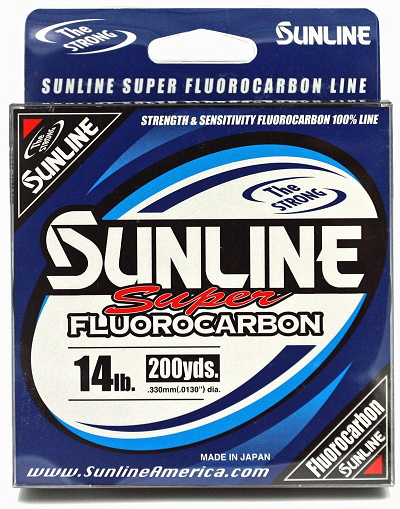
| Buy Fishing Line Based on Diameter, Not Lb. Test, Advises Sunline from The Fishing Wire Making enough line to go around the world nearly 34 times each year, Sunline has the largest stand-alone line factory on the planet. Despite making so much line every year, quality and accuracy are guiding principles for production of every spool of line that Sunline makes. Sunline manufactures their lines to strict diameter tolerances that require a specific diameter range for each lb test. These diameter specifications are held across the globe for any line we offer. Japanese laws require line companies selling line in the Japanese domestic market to label lines with a specific lb test based on pre-determined diameter ranges. This policy ensures lines rated at a specific lb test will break at that lb test for true accuracy. The true measure of a line or fiber is the denier rating. Denier is a unit of measure for the linear mass density of fibers. It is the mass in grams per 9000 meters of the fiber. This provides a true measure of the strength of a line or fiber and allows the strength of different materials to be compared regardless of the diameter. One fiber may have a higher breaking strength because it is larger in diameter, but that does not mean it is stronger, only thicker in diameter. Denier allows fibers to be tested and compared regardless of diameter for a true comparison. Companies selling line in Europe are also held to a similar standard for diameters with the EFTTA Line Charter. The charter is a pledge by over 35-line manufacturers stating they will only manufacture lines that meet agreed upon standards. A few of those include: To print on their products clear and accurate descriptions in terms of diameters and breaking strength that are easy to understand, truthful and respectful of consumer protection laws and the standards of the industry, in compliance of the ISO 2062 Standards. To run quality controls in sufficient quantities and sufficiently often to ensure that products labels are always accurate. Not to use any other labeling in terms of breaking strength that is not scientifically demonstrated or agreed by the industry so as to avoid any confusion among consumers leading to unfair competition. So, what about the US? There are no such guidelines or charters in the US market regulating diameters. Line companies can produce a line and label it with any lb test they want. What better way to make a line seem stronger than it really is than to make a larger line and label it with a lower lb test. This will make the line seem much stronger than it really is. An angler thinks the line is strong but doesn’t realize they are fishing with a much larger line size. If an angler were to catch a record fish using one of these inflated lines, the record would not be upheld when they submitted the record catching line for testing. In some cases, an angler thinking he is buying 12lb line is actually buying 22lb line with a 12lb label on it. This can obviously impact the status of record fish caught with inflated line sizes. Other ways inflated lines impact anglers are in the performance of their lures. Many lures swim or run better with lighter line. If you are buying line you think is 12lb which will allow a lure to perform at its best, but the line is much larger it can impact the performance of the lure. Crankbaits and jerkbaits run deeper with smaller diameter lines allowing them to reach maximum depth. Similarly, anglers that troll a lot purchase lines based on the diameter knowing it will impact the diving depths of their crankbaits when trolled. The Precision Trolling Data shows the impact that a larger diameter can have on the diving depth of a crankbait. Additional Resources EFTTA, https://www.eftta.co.uk/line-charter/ Trolling data, https://www.precisiontrollingdata.com/ Denier, https://standardfiber.com/about-denier/ Lines, www.sunlineamerica.com |